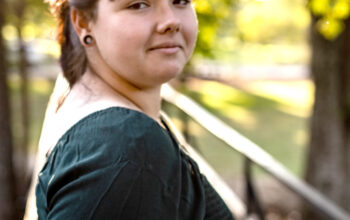By Todd Travis
When the Fountain Square Theater Building was built in 1928, it must have been quite a spectacle to behold. It contained a Vaudeville Theater, a bowling alley, a speakeasy dance hall, offices and retail storefronts.
“It was basically a shopping center because at the time there was no such thing. This building had all those needs for the community and the neighborhood,” said Linton Calvert, longtime owner of Fountain Square Theater Building and the many different businesses inside.
Shortly after the opening of the vaudeville theater, it was converted into a movie theater – showing different movies instead. At the time, Fountain Square was known as being a theater district, with about four or five theaters right in the nearby area. Of the different theaters, the Fountain Square Theater was the biggest of them all.
It would remain a movie theater up until 1959, when the Woolworth company gutted the theater and put a department store there instead. The bowling alley and the offices remained in the building at that time as well. Then a new trend began to siphon people away from the Fountain Square area.
“Basically what happened is you had Glendale, Eastgate, Greenwood shopping centers that evolved in the ’60s. People tend to move out to the suburbs and so Fountain Square became sort of a lost commodity to the suburban growth in the shopping centers,” Calvert explained.

“Plus the interstate went through downtown which cut the umbilical cord of Virginia Avenue for a while because of all the construction. So Fountain Square fell by the wayside for a while,” he added.
Calvert grew up on the Near Eastside in the Twin Aire neighborhood. He went to church on Prospect Street at Randolph, just east of the building. He also went to Barber College on Virginia Avenue, which got torn down once the interstate went through.
“I was familiar with the area even though I had never been to the building at that point,” Calvert remembered.
Prior to getting involved with the building, Calvert found his success throughout the city by opening eight hair salons and five beauty schools. Once he had gotten established in that area, he bought a 12-lane bowling alley since bowling was something he had enjoyed and done well at as a kid. Not long after, the bowling alley was converted to duckpin bowling. Calvert had more experience with that.
“The success of that being converted to duckpin bowling, I then realized that the Fountain Square Building had a bowling alley on the fourth floor which had been vacant for a number of years. And I aspired to re-open that and open the building. That was a steppingstone into me being able to develop the building,” Calvert said.

When Calvert originally approached the owner of the building to buy it, he found that the owner wasn’t willing to sell right. Instead they agreed to a 42-month lease with an option to buy at an agreed price.
“So we basically had 42 months to make the building financeable, and that was quite a job. At the time it had no heat, no air, nothing,” Calvert said.
Along with his wife, Fern, Calvert developed all the businesses within the building. That included the fourth-floor duckpin bowling, an atomic duckpin bowling in the basement, a hotel on the third floor, apartments on the second floor along with Linton and Fern’s personal home, a theater that would later become a banquet hall, the Imbibe bar, a diner, and a barbecue restaurant which has since turned into an Italian restaurant.
Then there was a barber shop, beauty shop and a little lounge bar on Prospect Street which were also developed by the Calverts.
“Those were things that we had developed so I basically rented the building back to myself. There were a lot of days where I never went outside. It was the love of my life. I enjoyed every minute of it. I had 25-plus years of living and working within the building. We took a vacant building, and I filled it up with businesses of my own and that’s how it evolved,” Calvert said.
After many years developing this building, someone finally made the Calverts an offer to buy the building that they would accept. However, Calvert asked that he keep his businesses running and would then begin to rent the space from the new owner, and the owner agreed. Just last summer, someone in the wedding reception and banquet business who was looking to expand bought the business.
And so the building continues to stand as a legacy to the Calverts as they have moved on in their lives to the next phase. Still, Fern’s sister and another partner of the Calvert’s, Eric, have kept a minority interest in the buildings and continue to be involved. Fern remains on the payroll, so it seems there is still a tiny bit of involvement left, but the building is mainly left for a new group to take forward.


